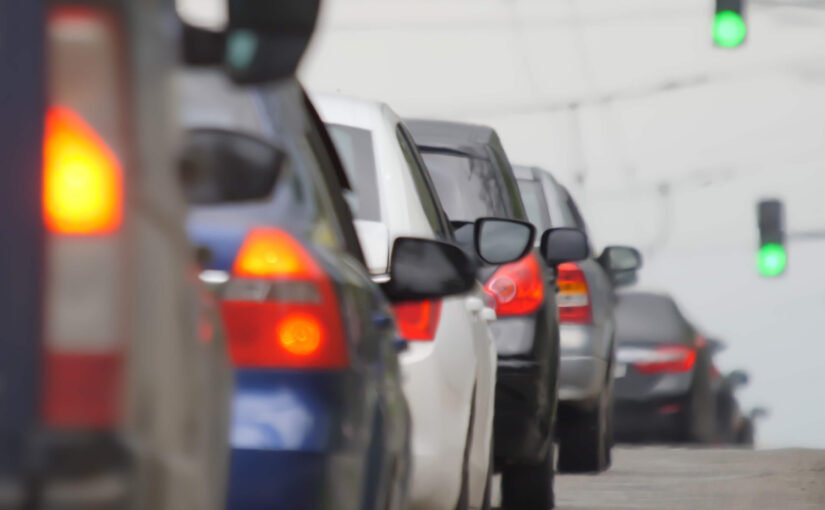Cars are one of the leading causes of pollution in the environment, It’s important that we try to reduce how often we use our cars, and there are various ways to imagine what a world without cars might be like.
Let’s learn more about World Car Free Day, how cars affect the environment, the benefits of car-free zones, and whether “green” cars can help.
What is World Car Free Day?
On World Car Free Day, we are encouraged to avoid driving our cars on the road. The day is observed all over the world and allows people to experience life without congested roads and traffic.
Informal car-free days have occurred in the past, and the first official day took place in 2000. Many large cities have been known to close central streets and fill them with walking and cycling events, among others. This year’s World Car Free Day will be held on Wednesday 22nd September.
How do cars affect the environment?
Road transport is a major source of pollution in the United Kingdom. Cars contribute to noise pollution, traffic congestion, climate change, and poorer air quality. Traveling by car is a simple and convenient option, but the environmental impact is concerning.
At the end of March 2021, there were 38.6 million vehicles in Great Britain, which is an 0.8%increase since the previous year. Each of these vehicles emit carbon emissions, which contribute significantly to climate change. Traffic levels are expected to increase and road transportation continues to play a significant role in global warming.
Carbon monoxide, hydrocarbons, and nitrogen oxides are among the air pollutants released into the environment by various modes of transportation. When air quality is poor, it can have an impact on the health of people, animals, and the local vegetation.
Are there benefits to car free zones?
There are numerous advantages to having car-free zones, whether for a single day or on a permanent basis. Not only would it reduce the amount of pollution emitted by vehicles, but it would also allow people to walk safely in areas free of traffic and congestion.
When a zone is car-free, it often forces people to try new modes of transportation, the majority of which can improve fitness on some level. People who cycle or walk instead of driving, for example, will get more exercise and improve their health.

Aside from the impact vehicles have on air quality and climate change, they also have a local impact on people in a variety of ways. For example, road noise affects approximately 30% of people in the UK. This includes engine noise, car horns, music playing from vehicles, and squeaking brakes.
Can “environmentally friendly” cars help?
In today’s car market, there is a plethora of options to choose from, including hybrid and all-electric models.
However, some argue that plug-in hybrids are a “wolf in sheep’s clothing,” with analysis indicating that they emit an average of 120g of CO2 per km. This is a noticeable difference over the 44g per km found in official “lab” tests.
As part of the government’s goal to reduce carbon emissions to zero by 2050, they have set a target of prohibiting the sale of diesel and petrol vehicles by 2030. Although the production of electric vehicles consumes a lot of electricity, processes are being improved to reduce this. However, even with the amount of electricity used to power an electric vehicle, carbon emissions are 17–30% lower than driving a petrol or diesel vehicle.
Eco friendly transportation ideas
Although more environmentally-friendly vehicles are becoming widely available, there are even better options which reduces carbon emissions it a more significant level.
Walking
Walking is one of the best ways to travel if you have the time. While less convenient, walking can help you stay healthy while also lowering your carbon footprint.
Furthermore, it is a much less expensive option than driving or taking public transportation. See if there are any car-free zones near you on World Car Free Day – it could be a good route to try if you want to increase the amount you walk.
Cycling
Riding a bike to get around is fun, saves money, and is good for the environment. Although the initial cost of a bike and safety equipment can be high, there are programmes such as the Bike to Work scheme that help spread and reduce the cost.
You can save time and money on parking by taking advantage of bike lanes, which allow you to bypass traffic and arrive at your destination faster. Cycling also keeps you fit and may even become a new hobby for you!
Skateboarding or roller skating
Many people have taken up new hobbies since the lockdown, which they also use as modes of transportation.
For example, skateboarding and roller skating have both grown in popularity as a way to get around in recent years. However, if you try either skateboarding or roller skating as a new mode of transportation, make sure to stay away from busy roads and wear all necessary safety equipment. If you’re just starting out, it’s best to use roller skating and skateboarding as a recreational activity rather than a primary mode of transportation.
Public transport
Taking public transportation reduces carbon emissions and congestion as it means less vehicles on the road.
As public transport such as trains, buses, and trams reduce the number of single cars on the road, they help to reduce smog and emissions that contribute to air pollution and climate change.
Leeds now has zero-emission buses that run solely on electricity. They are a great way to get around without having to use your car, and it may even save you money.
How to reduce pollution while using your car
Oftentimes, it is not feasible for you to travel somewhere without your car. Let’s talk about things you can do to reduce pollution while still using your car.
Avoid using your car for short journeys
If you’re not going far, try to avoid using your car too often by combining your regular trips into one journey or take public transport. It’s a good way to lower emissions and get your jobs done in one go as well.
Service your vehicle regularly
You can keep your car in good condition by checking the tyre pressure, engine, and brakes. This isn’t just good for you and how your car feels, but it also makes your car slightly more energy efficient.
Switch your vehicle off when you are stopped
If you’re stuck in traffic or at a long set of traffic lights, turn off your engine. Many cars now have “stop start” features that turn your car off automatically when the handbrake is applied and the transmission is in neutral.
Don’t use the air conditioning unless you have to
Air conditioning and other on-board electrical features deplete your fuel supply. You should only use features like this when absolutely necessary. In addition to using less fuel, you will save money and not have to fill up your tank as frequently.
Plan your journeys
Plan your journeys carefully so you don’t waste fuel getting lost. You’ll arrive at your destination much faster and have a lower carbon footprint.
Drive gently
If you frequently exceed the speed limit or accelerate quickly from a stop, you will increase your car’s fuel consumption. Try to use higher gears in appropriate speed zones and follow all speed limits.
